Emma Goldman
This exhibit was produced in collaboration with the Emma Goldman Papers.
"I want freedom, the right to self-expression, everybody's right to beautiful, radiant things."
Emma Goldman dedicated her life to the creation of a radically new social order. Convinced that the political and economic organization of modern society was fundamentally unjust, she embraced anarchism for the vision it offered of liberty, harmony and true social justice. For decades, she struggled tirelessly against widespread inequality, repression and exploitation.
Goldman's deep commitment to the ideal of absolute freedom led her to espouse a wide range of controversial causes. A fiery orator and a gifted writer, she became a passionate advocate of freedom of expression, sexual freedom and birth control, equality and independence for women, radical education, union organization and workers' rights.
Support for these ideas—many of which were unpopular with mainstream America—earned Goldman the enmity of powerful political and economic authorities. Known as "exceedingly dangerous" and one of the two most dangerous anarchists in America, she was often harassed or arrested while lecturing, and sometimes banned outright from speaking. Insisting on the right to express herself in the face of overwhelming odds, Goldman became a prominent figure in the establishment of the right to freedom of speech in America.
Although Goldman was hostile to religion in general, her core beliefs emerged in part from a Jewish tradition that championed the pursuit of universal justice. Her early experiences in Russia and as an immigrant to the United States laid the groundwork for her later analyses of political and economic problems, and she understood that her own ideals had their roots in a Jewish historical experience shaped by longstanding oppression. Goldman's career stands as an important chapter in the history of Jewish activism in America.
Notes:
- Quotation beginning "I want freedom" from Emma Goldman, Living My Life (New York: Alfred A. Knopf, 1931), 56.
- Quotation "exceedingly dangerous" woman by United States Attorney Francis Caffey, July 12, 1917, National Archives.
Early Years
Born on June 27, 1869, in Kovno, Lithuania (then part of the Russian Empire), Emma Goldman became acquainted with poverty, injustice and oppression at a young age. She witnessed violence against women and children, landlords brutalizing peasants, and corrupt officials extorting fees from a powerless constituency. Her family experienced significant anti-Semitism, living in Jewish ghettoes and forced to move often in search of opportunity.
Goldman's family provided her with little refuge from the outside world. Although her mother, Taube, was active in the Jewish community, she was frequently depressed and emotionally distant from her children. Her father, Abraham, vented his anger at the difficulties of life by tyrannizing his family. Emma, the special focus of Abraham's rages, recalled him as "the nightmare of my childhood."
As a child, Goldman spent four years at a Jewish elementary school in her grandmother's hometown of Königsberg, doing well academically but rebelling against the capricious authority of the teachers. At thirteen, she moved with her family to St. Petersburg, where she had six more months of schooling and came into contact with radical students and revolutionary ideas.
An avid reader, Goldman devoured works by the Russian populists and nihilists, who sparked her imagination and reinforced her faith that injustice must be confronted. But her father attempted to crush her yearnings for freedom and opportunity. Telling her, "All a Jewish daughter needs to know is how to prepare gefüllte fish, cut noodles fine, and give the man plenty of children," he refused to let her continue her studies. Instead, he sent her to work in a factory and tried to force her into marriage at the age of fifteen.
Notes:
- Quotation "the nightmare of my childhood" cited in Alix Kates Shulman, ed., Red Emma Speaks: An Emma Goldman Reader, 3rd edition (Atlantic Highlands, NJ: Humanities Press International, Inc. 1996), 21.
- Quotation beginning "All a Jewish daughter needs" cited in Emma Goldman, Living My Life (New York: Alfred A. Knopf, 1931), 12.
- Additional information from Shulman, 20-21; Goldman, passim; "Biographical Essay on Emma Goldman" on the website of the Emma Goldman Papers, accessed March 26, 2002, available at http://sunsite.berkeley.edu/goldman/Curricula/bioessay.html.
Political Awakening
Dreaming of a new world of equality, justice and freedom, Goldman and her sister Helena fled Russia for the United States in 1885. As they sailed into the New York harbor, Goldman rejoiced in her arrival in "the free country, the asylum for the oppressed of all lands." "We, too," she thought, "would find a place in the generous heart of America."
Goldman's hopes were quickly shattered by the dismal realities of working-class life. Settling with relatives in Rochester, NY, she found work in a factory. Although conditions were better than in Russia, the pace of work was faster, the discipline was harsher, and Goldman was paid only $2.50 for a 10 ½-hour day. Family and communal life, moreover, could be as restrictive as those she had left behind. Evidently, "the golden land" did not always live up to its promises.
A series of shocking events soon sparked Goldman's political awakening. On May 4, 1886, labor and radical activists held a rally in Chicago's Haymarket Square to protest the brutal suppression of a strike by the police. As the police attempted to stop the meeting, a bomb exploded, injuring many people and killing a police officer. In the ensuing chaos, a number of demonstrators were killed and six officers fatally injured, mostly by police gunfire.
Police and press accused several prominent Chicago anarchists of throwing the bomb that caused the carnage. Despite flimsy evidence, eight were convicted of murder, with seven sentenced to death. Four were executed on November 11, 1887, two had their sentences commuted to life imprisonment, and one committed suicide. Broad international protests followed the verdict. Goldman, too, was outraged at what she believed to be a travesty of justice. Convinced of the men's innocence, she began to read everything she could about anarchism.
Notes:
- Quotations beginning "the free country" and "We, too" from Emma Goldman, Living My Life (New York: Alfred A. Knopf, 1931), 11.
- Additional information from Goldman, Living My Life, passim; "Biographical Essay on Emma Goldman" on the website of the Emma Goldman Papers, accessed March 26, 2002, available at http://sunsite.berkeley.edu/goldman/Curricula/bioessay.html; "The Dramas of Haymarket," on the website of the Chicago Historical Society, accessed April 30, 2002, available at http://www.chicagohistory.org/dramas; Candace Falk, Love, Anarchy, and Emma Goldman (New York: Holt, Rinehart and Winston, 1984), 19-20, revised paperback edition from Rutgers University Press, 1990, 1999.
A Dedicated Anarchist
Sympathetic to revolutionary ideas since her days in St. Petersburg, Goldman was soon captivated by anarchism. In August 1889, she broke definitively with her husband, Jacob Kershner. Leaving Rochester for New York City, she plunged immediately into a life of political meetings, labor demonstrations and intellectual discussions.
Goldman defined anarchism as "the philosophy of a new social order based on liberty unrestricted by man-made law; the theory that all forms of government rest on violence, and are therefore wrong and harmful, as well as unnecessary." The corresponding anarchist-communist belief that private property was inherently repressive and exploitative also resonated with her experiences and ideals. Desiring a state of absolute freedom and believing it would never come about through gradual reform, Goldman and her comrades advocated complete destruction of the State.
Yet anarchists did not champion chaos or disorder. Trusting that human nature was inherently good, they believed free people would naturally form the most productive and just systems, entering into organizations strictly on their own accord. "Organization as the result of natural blending of common interests," Goldman wrote, "brought about through voluntary adhesion, Anarchists do not only not oppose, but believe in as the only possible basis of social life."
The numerous causes for which Goldman worked throughout her life were all expressions of her impassioned dedication to the anarchist principle of absolute freedom. In late 1889, she and her first great love and eventual life-long comrade, fellow Russian immigrant Alexander Berkman, "made a pact—to dedicate [themselves] to the Cause in some supreme deed, to die together if necessary, or to continue to live and work for the ideal for which one of [them] might have to give his life." Her eloquence and dedication quickly made her a popular speaker and a prominent member of New York's immigrant anarchist community.
Notes:
- Quotation beginning "the philosophy of a new social order" from Emma Goldman, "Anarchism: What it Really Stands For," in Anarchism and Other Essays (New York: Mother Earth Publishing Association, 1910), 56.
- Quotation beginning "Organization as a result of" from Emma Goldman, "What I Believe," in Alix Kates Shulman, ed., Red Emma Speaks: An Emma Goldman Reader, 3rd edition (Atlantic Highlands, NJ: Humanities Press International, Inc. 1996), 60, first published in the New York World, July 19, 1908.
- Quotation beginning "made a pact" from Emma Goldman, Living My Life (New York: Alfred A. Knopf, 1931), 62.
- Additional information from "Biographical Essay on Emma Goldman" on the website of the Emma Goldman Papers, accessed March 26, 2002, available at http://sunsite.berkeley.edu/goldman/Curricula/bioessay.html; Alix Kates Shulman, "Biographical Introduction," Red Emma Speaks.
The Use of Violence
In 1892, Goldman and Berkman were horrified by the violent suppression of Pennsylvania steelworkers who had been locked out of their jobs for demanding better wages. They decided that they should assassinate Henry Clay Frick, the Carnegie Steel manager responsible for the bloodshed. With Goldman's assistance, Berkman obtained a pistol, traveled to Pennsylvania, and shot and wounded Frick.
Many anarchists believed that acts of violence designed for maximum symbolic impact could inspire workers to seize the means of production, overthrow conventional government, and begin to create a more just social order. Goldman and Berkman hoped that their attack on a prominent representative of capitalist oppression would demonstrate to the working classes that they need no longer accept the brutality of the prevailing economic system. Instead, their actions helped provoke a nationwide fear of anarchism. Although Goldman escaped indictment, Berkman received a 21-year prison sentence.
In 1901, claiming to be acting under Goldman's influence, Leon Czolgosz assassinated President William McKinley. Although she had not been involved and had met Czolgosz only briefly, Goldman was immediately arrested as an accomplice. Lack of evidence eventually forced the authorities to order her release, but anti-anarchist agitation in the press resulted in her demonization as the epitome of the violent anarchist.
Contrary to public perception, Goldman's primary form of political action was education, not violence. She preferred to use the spoken word to challenge the current political order and to prepare her audiences to embrace and participate in the hoped-for revolution. Yet although her faith in the effectiveness of violence as a political tool decreased over time, she did believe that violence was at times inevitable. She considered it justified against an inherently violent state, and she never ceased to sympathize with those—like Czolgosz—whose sensitivities drove them to violent extremes.
Notes:
- Quotation beginning "I ceased to regard political acts" from Emma Goldman, Living My Life (New York: Alfred A. Knopf, 1931), 190.
- Additional information from Goldman, Living My Life, passim; "Biographical Essay on Emma Goldman" on the website of the Emma Goldman Papers, accessed March 26, 2002, available at http://sunsite.berkeley.edu/goldman/Curricula/bioessay.html; Emma Goldman, "The Tragedy of Buffalo," in Hippolyte Havel, ed., The Revolutionary Almanac (New York: The Rabelais Press, 1914), microfilm edition of the Emma Goldman Papers, (Alexandria, VA: Chadwyck Healey, Inc., 1991), original obtained from the University of California, Berkeley.
Speaking & Writing
Goldman devoted the next decades to spreading her vision of an ideal society. A gifted orator, she toured the United States several times a year, lecturing in German, Yiddish and English. In addition to lending her voice to local labor and political battles, she spoke out on such topics as anarchism, politics, drama, birth control, economic freedom for women, radical education, and anti-militarism. On her 1910 tour, she spoke 120 times in thirty-seven cities in twenty-five states, reaching 25,000 people.
Goldman also wrote extensively, drafting many pamphlets, penning thousands of letters to countless correspondents, and contributing articles and essays to numerous anarchist and mainstream periodicals. She published the first of many editions of Anarchism and Other Essays in 1910; her ideas on modern theater appeared in 1914 as The Social Significance of the Modern Drama.
The diverse audiences that flocked to hear Goldman included not only the immigrant laborers who seemed her most natural constituency, but also middle-class men and women, intellectuals, and even farmers attracted by her unconventional opinions and her charisma. As well as encouraging the working classes to resist exploitation by capitalist oppressors, she appealed consciously to members of the middle class, whose participation she believed was necessary for the success of the revolution and whose oppression she believed took its own, unrecognized forms.
In 1906, acting from her growing conviction that "the most violent element in society is ignorance," Goldman founded her own political and literary magazine. Running until 1917, Mother Earth served as a forum for anarchist ideas and news of international movements, as well as a venue in which radical artists and writers could express themselves.
Notes:
- Quotation "the most violent element in society is ignorance" from Emma Goldman, "Anarchism: What it Really Stands For," in Anarchism and Other Essays (New York: Mother Earth Publishing Association, 1910), 55-56.
- Additional information from "Biographical Essay on Emma Goldman" on the website of the Emma Goldman Papers, accessed March 26, 2002, available at http://sunsite.berkeley.edu/goldman/Curricula/bioessay.html; Emma Goldman, Living My Life (New York: Alfred A. Knopf, 1931); Alice Wexler, Emma Goldman in Exile: From the Russian Revolution to the Spanish Civil War (Boston: Beacon Press, 1989), 142-143.
Religion
Goldman's experiences of anti-Semitism, immigration, and factory work—shared by hundreds of thousands of her Jewish contemporaries—shaped her understanding of oppression and prompted her initial activist impulses. "At the age of eight," she recalled in her autobiography, "I used to dream of becoming a Judith and visioned myself in the act of cutting off Holofernes' head to avenge the wrongs of my people."
Goldman's anarchist activities placed her squarely within an immigrant Jewish culture of engagement in radical politics. She recognized, moreover, that her ideals were rooted in a longstanding Jewish tradition that emphasized the pursuit of universal justice, and she spoke movingly of the Jews' "great service to culture and to humanity."
Yet Goldman also believed that religion was inherently repressive; like her comrades, she saw anarchism as standing not only for freedom from government and property, but also for "the liberation of the human mind from the dominion of religion." In addition to expounding upon the dangers of Christian Puritanism, Goldman criticized what she saw as the narrow conservatism of the traditional Jewish community. Although she had a large Yiddish-speaking following, she did not hesitate to take part in events on Jewish holidays to emphasize her rejection of Judaism as a religion.
Envisioning a world in which identification with universal humanity would replace ethnic, racial and religious loyalties, Goldman was highly critical of Zionism. Despite her criticism of the Zionist movement, however, her growing awareness in the 1930s of the "desperate need of millions of people who are slowly being exterminated" made her increasingly sympathetic to Jewish attempts to establish settlements in Palestine, as long as they respected the rights of local inhabitants.
Notes:
- Quotation beginning "At the age of eight" from Emma Goldman, Living My Life (New York: Alfred A. Knopf, 1931), 370.
- Quotation beginning "great service to culture and to humanity" from Emma Goldman, "The Collapse of German Culture," microfilm edition of the Emma Goldman Papers (Alexandria, VA: Chadwyck Healey, Inc., 1991), reel 55, original at the International Institute of Social History.
- Quotation beginning "the liberation of the human mind" from Emma Goldman, "What Anarchism Means to Me," in Anarchism and Other Essays (New York: Mother Earth Publishing Association, 1910), 68.
- Quotation beginning "desperate need of millions of people" from Emma Goldman, "Palestine and Socialist Policy," Spain and the World, August 26, 1938.
Women's Rights
"I demand the independence of woman," Goldman wrote in 1897, "her right to support herself; to live for herself; to love whomever she pleases, or as many as she pleases." Unlike many turn-of-the-century anarchists, who believed that any problems faced by women would simply disappear when anarchism ushered in a new society, Goldman worked from the conviction that women labored under distinct disabilities, which had distinct causes.
Throughout her career, Goldman addressed the need for the economic, social and sexual emancipation of women. According to her, the patriarchal family, sexual and reproductive repression, and financial difficulties all contributed to women's inferior status and prevented the full flowering of their individuality. Marriage, in her opinion, was simply a legalized form of prostitution, in which women traded sex for economic and social standing. Convinced that enforced childbearing further eroded women's economic and sexual autonomy, she became a prominent figure in the struggle for free access to birth control.
Goldman's determination to speak out on her controversial views on sexual and reproductive freedom led to frequent arrests. It also brought her into conflict with the mainstream women's movement, which she saw as conservative and benefiting primarily the middle class. Goldman opposed the contemporary fight for women's suffrage and efforts to open professional careers to women, believing they would result at best in the illusion of improvements to a fundamentally corrupt system. To her, these causes were mere distractions from deeper, more important internal struggles. "[Woman's] development, her freedom, her independence," she claimed, "must come from and through herself. First by asserting herself as a personality, and not as a sex commodity. Second, by refusing the right to anyone over her body;... by refusing to be a servant to God, the State, society, the husband, the family, etc.... By freeing herself from the fear of the public opinion and the public condemnation."
Notes:
- Quotation beginning "I demand the independence of woman" from Emma Goldman, "Marriage," Firebrand (Portland, OR), July 18, 1897.
- Quotation beginning "Woman's development" from Goldman, "Woman Suffrage," in Anarchism and Other Essays (New York: Mother Earth Publishing Association, 1910), 217.
- Additional information from Alix Kates Shulman, "Emma Goldman's Feminism: A Reappraisal," in Shulman, ed., Red Emma Speaks: An Emma Goldman Reader, 3rd edition (Atlantic Highlands, NJ: Humanities Press International, Inc. 1996), 3-19.
Love & Sexuality
Unlike some of her comrades, whose radical politics were matched by often conventional private lives, Goldman believed individuals should enter into and leave personal relationships with no constraints, a view determined by both her commitment to the principle of absolute freedom and her own disappointing experience of marriage. "If I ever love a man again," she said in 1889, "I will give myself to him without being bound by the rabbi or the law, and when that love dies, I will leave without permission."
Goldman applied her ideas about free love consistently to women and men, homosexuals and heterosexuals. Her advocacy of homosexual rights earned her opposition even from some within the anarchist community, who believed such an unpopular position would only heighten hostility toward the anarchist movement. As usual, Goldman was as ready to defy her own comrades as her political adversaries.
Believing that love and sexuality were crucial to personal and professional fulfillment, Goldman engaged in numerous passionate affairs throughout her life. Her first important relationship was with her life-long comrade, Alexander Berkman; her longest and most torrid affair was with her manager, Ben Reitman, who aroused a sense of her own sexuality that at times overwhelmed her rational, analytic side. "You have opened up the prison gates of my womanhood," she wrote to him. "[A]ll the passion that was unsatisfied in me for so many years, leaped into a wild reckless storm boundless as the sea."
Goldman cycled often between the energy, excitement and ecstasy that accompanied a new affair and the despair and hopelessness she experienced when the relationship failed to live up to her expectations. Despite her commitment to free love, Goldman was unable to overcome desperate feelings of jealousy, and she had trouble reconciling her public image as a strong, independent woman with the insecurity and pain men caused her. "[T]he world would stand aghast," she commented, "that I,...the strong revolutionist,...should have been as helpless as a shipwrecked crew on a foaming ocean."
Notes:
- Quotation beginning "If ever I love a man again" from Emma Goldman, Living My Life (New York: Alfred A. Knopf, 1931), 36.
- Quotation beginning "You have opened up the prison gates" from letter from Emma Goldman to Ben Reitman, September 27, 1908, University of Illinois, Circle Campus, cited in Candace Falk, Love, Anarchy, and Emma Goldman (New York: Holt, Rinehart and Winston, 1984), 4, revised paperback edition from Rutgers University Press, 1990, 1999.
- Quotation beginning "The world would stand aghast" from letter from Emma Goldman to Ben Reitman, July 29, [1911], University of Illinois, Circle Campus, cited in Falk, Love, Anarchy, and Emma Goldman, 4.
- Additional information from Goldman, 555-556; Falk, Love, Anarchy, and Emma Goldman, passim.
Free Speech
The First Amendment to the Constitution notwithstanding, freedom of speech was far from guaranteed in late nineteenth and early twentieth century America. Wary of challenges to the existing political and economic system, government authorities and vigilantes frequently harassed those who espoused unpopular opinions. Goldman, not surprisingly, became a prime target. Hecklers disrupted her lectures and the police often suppressed her speeches and writings.
Under surveillance for much of her adult career, Goldman was arrested so often that she began to carry a book wherever she went, for fear of sitting in jail with nothing to read. According to her autobiography, when she asked once why she had been arrested, the police officer replied simply, "Because you're Emma Goldman. Anarchists have no rights in this community, see?"
Undeterred, Goldman pointed out that the United States' failure to live up to its stated ideals made it no better than repressive regimes it opposed. "The Russian Tsar stands for free speech, which means his right to say what he pleases," she wrote. "So do also the American Tsars: they have their rights of free speech. But the moment you or I claim the same right, law and authority become indignant at such Anarchist impudence."
As the government stepped up its attempts to suppress Goldman's views, liberal and radical Americans became increasingly vocal in their opposition to abridgement of First Amendment rights. Many people who disagreed with Goldman's unconventional opinions nonetheless supported her right to express herself freely. In 1903, Goldman became involved with the Free Speech League in New York City, which had become increasingly active in the wake of anti-anarchist laws passed after President McKinley's assassination in 1901. Goldman's career also served as inspiration for Roger Baldwin, a future founder of the American Civil Liberties Union.
Notes:
- Quotation beginning "Because you're Emma Goldman" from Emma Goldman, Living My Life (New York: Alfred A. Knopf, 1931), 191.
- Quotation beginning "The Russian Tsars" from Emma Goldman, "En Route," Mother Earth, April 1908.
- Additional information from "Emma Goldman and Free Speech," on the website of the Emma Goldman Papers, accessed March 18, 2002, available at http://sunsite.berkeley.edu/goldman/Exhibition/freespeech.html; Candace Falk, Love, Anarchy, and Emma Goldman (New York: Holt, Rinehart and Winston, 1984), 11-12, revised paperback edition from Rutgers University Press, 1990, 1999.
No-Conscription League
As the United States drifted toward engagement in World War I in 1916, Goldman threw her energy into opposing the government's military preparations. Although she was not a pacifist, like most anarchists she believed that the state had no right to make war. World War I, moreover, seemed to her to embody the worst aspects of modern war: although ostensibly fought to make the world safe for democracy, it was in her eyes an imperialist venture fought on behalf of capitalists at the expense of the working class and all those who were oppressed. Goldman's antiwar efforts earned her the wrath of the federal government, which banned Mother Earth in 1917 along with many other antiwar periodicals.
Undaunted, Goldman helped launch the No-Conscription League in May 1917, soon after America's entry into the war. Goldman and the League argued that the draft contradicted fundamental American principles of liberty. "In these days when every principle and conception of democracy and individual liberty is being cast overboard under the pretext of democratizing Germany," she wrote, "it behooves every liberty loving man and woman to insist on his or her right of individual choice in the ordering of his life and action."
On June 15, 1917, Goldman and Alexander Berkman were arrested and charged with conspiring against the draft. In the ensuing trial, Goldman argued that her actions, far from being anti-American, were in fact the essence of patriotism, for they were intended to prompt her adopted country to live up to its own ideals. Rather than organizing a conspiracy to obstruct the draft, she claimed, she had been exercising her right to free speech and educating her audiences about conscientious objection. Ultimately, Goldman and Berkman were convicted and sentenced to two years in prison, with the possibility of deportation upon their release. After an unsuccessful appeal to the Supreme Court, Goldman entered the Missouri State Penitentiary on February 6, 1918.
Notes:
- Quotation beginning "In these days" from pamphlet for the No Conscription League, published in Transcript of Record: Supreme Court of the United States, Emma Goldman and Alexander Berkman, Plaintiffs-in-Error vs. The United States.
- Additional information from "War Resistance, Anti-Militarism, and Deportation, 1917-1919," on the website of the Emma Goldman Papers, accessed March 18, 2002, available at http://sunsite.berkeley.edu/goldman/Exhibition/deportation.html.
Deportation & the Soviet Union
Following World War I, high unemployment, labor unrest, and a growing distrust of immigrants and their "foreign" ideas heightened the American government's increasing intolerance of dissent. Released from prison on September 27, 1919, Goldman was immediately re-arrested on the order of the young J. Edgar Hoover, then director of the Justice Department's General Intelligence Division. Hoover persuaded the courts to deny Goldman's citizenship claims, thus making her eligible for deportation under the 1918 Alien Act, which allowed for the expulsion of any alien found to be an anarchist. On December 21, 1919, Goldman, Berkman, and 247 other foreign-born radicals were deported to the Soviet Union on the S.S. Buford.
Unlike many other anarchists, who opposed a socialist or communist government as much as a capitalist one, Goldman arrived in the Soviet Union with high hopes that the recent Russian Revolution had inaugurated the new, liberated society of which she had long dreamed. Instead, she was shocked by the ruthless authoritarianism of the Bolshevik regime, its severe repression of anarchists, and its disregard for individual freedom.
In a face-to-face meeting with Lenin in 1920, Goldman and Berkman questioned the Soviet leader on the lack of freedom of speech and the press and the persecution of anarchists in Soviet Russia. The inadequacy of Lenin's response, together with growing repression in Russia and the slaughter of the Kronstadt rebels in 1921, prompted the two anarchists to leave the Soviet Union after only 23 months in residence.
Although Goldman continued to defend the revolution, she distinguished it carefully from the subsequent Bolshevik regime. In 1923, she published My Disillusionment in Russia, in which she argued forcefully that the emergence of the Bolshevik party-state had crushed the true revolution. Notwithstanding the prescience of her critique, the persistence and energy of Goldman's anti-Bolshevism earned her the enmity of many European and American leftists.
Notes:
- Information drawn from "War Resistance, Anti-Militarism, and Deportation, 1917-1919," "Emma Goldman in Exile," and "Biographical Essay on Emma Goldman" on the website of the Emma Goldman Papers, accessed March 18, 2002, available at http://sunsite.berkeley.edu/goldman/Exhibition/deportation.html, http://sunsite.berkeley.edu/goldman/Exhibition/exile.html, and http://sunsite.berkeley.edu/goldman/Curricula/bioessay.html; and Alix Kates Shulman, ed., "Biographical Introduction," Red Emma Speaks: An Emma Goldman Reader, 3rd edition (Atlantic Highlands, NJ: Humanities Press International, Inc. 1996).
Exile
With the exception of a brief ninety-day lecture tour in 1934, Goldman spent the remaining years of her life in exile from the United States, wandering through Sweden, Germany, France, England, Spain and Canada in a futile search for a new political "home." In order to obtain the security of British citizenship, she married an elderly Welsh coal miner in 1925, but the marriage was only a formality.
In the 1920s and 1930s, while struggling economically and frustrated by the restrictions her status as an exile imposed on her political activities, Goldman engaged in a variety of literary projects. The most notable of these endeavors was her thousand-page autobiography, published in 1931 as Living My Life. In the early 1930s, Goldman also became increasingly concerned about the rising tide of fascism and Nazism. For the next several years, she lectured frequently on the imminent dangers posted by Hitler and his fellow fascists.
When the Spanish Civil War erupted in July 1936, Goldman hurled herself into the Loyalist cause with an enthusiasm reminiscent of her early activist years in America. Anarchists had succeeded in winning broad popular support in parts of Spain, and when Goldman visited collectivized towns and farms in Aragon and the Levante, she was electrified by what seemed to her to be the beginnings of a true anarchist revolution.
Goldman soon became the London representative of the National Confederation of Labor and the Anarchist Federation of Iberia (CNT-FAI), directing the English-language press service and propaganda bureau for the Spanish anarchists. She worked tirelessly, writing hundreds of letters to supporters and editors. Dismayed but not vanquished by Franco's triumph in early 1939, she moved to Canada, where she worked to gain asylum for Spanish refugees and helped foreign-born radicals threatened with deportation to fascist countries.
Notes:
- Information from "Emma Goldman in Exile," "Emma Goldman and the Spanish Civil War," and "Biographical Essay on Emma Goldman" on the website of the Emma Goldman Papers, accessed March 18, 2002, available at http://sunsite.berkeley.edu/goldman/Exhibition/exile.html, http://sunsite.berkeley.edu/goldman/Exhibition/spanishcivilwar.html, http://sunsite.berkeley.edu/goldman/Curricula/bioessay.html.
Legacy
In February 1940, Goldman suffered a stroke that left her unable to speak. After her death on May 14, 1940, the U.S. Immigration and Naturalization Service allowed her body to be re-admitted to the United States, where she was buried in Chicago near the Haymarket anarchists who had so inspired her. Thousands of mourners flocked to see her casket, and tributes poured in from every corner of the world.
Decades after her death, Goldman's presence remains with us in many ways. Her pioneering advocacy of workers' rights, women's rights, and sexual freedom helped to shape modern American society, and her work contributed directly to the advance of free speech and the legalization of birth control in the United States. Her own experiences, moreover, closely anticipated debates on some of today's most important political and social issues, such as the rights of immigrants, the value of dissent, and the true meaning of patriotism.
Goldman's passion, dedication and determination continue to inspire activists of all stripes. Even those who disagree with her ideas can find much to admire in her indefatigability, her zeal, and her unwillingness to adhere to anyone else's script. Her life proves that struggles pursued with resolve and resilience can indeed create change, even in the face of seemingly insurmoutable opposition. Despite constant obstacles, she never stopped fighting, and repeated disappointments never destroyed her belief in America and its possibilities. As her friend and lawyer Harry Weinberger said at her funeral, "You will live forever in the hearts of your friends and the story of your life will live as long as the stories are told of women and men of courage and idealism."
Notes:
- "Emma Goldman and the Spanish Civil War," on the website of the Emma Goldman Papers, accessed September 13, 2002, available at http://sunsite.berkeley.edu/Goldman/Exhibition/spanishcivilwar.html
- Quotation from Harry Weinberger, Emma Goldman (The Oriole Press: Berkeley Heights, NJ, 1940).
Media
Timeline
Born on June 27 in Kovno, Lithuania, to Taube (Bienowitch) and Abraham Goldman.
Immigrates to the United States with sister Helena, settling in Rochester, New York.
Marries fellow factory worker Jacob Kershner; divorces him the following year.
Execution of four anarchists unjustly convicted of bombing a labor rally in 1886 sparks Goldman's political awakening
Moves to New York City's Lower East Side and meets many prominent anarchists, including Alexander Berkman and Johann Most; the next year, delivers first of countless public lectures.
Conspires with Alexander Berkman in his assassination attempt on Henry Clay Frick, Carnegie Steel plant manager who ordered violent attacks on striking workers.
Serves ten months in prison for speaking at a demonstration of the unemployed.
Trains as a nurse in Vienna.
Unjustly implicated in the assassination of President McKinley and demonized by the press.
Becomes involved in Free Speech League in New York City in response to the passage of anti-anarchist laws.
Founds Mother Earth magazine; later publishes numerous articles and lectures, including Anarchism and Other Essays (1910) and The Social Significance of the Modern Drama (1914).
Arrested twice, imprisoned once, for lecturing and distributing material on birth control.
Co-founds No-Conscription League; sentenced to two years in prison for conspiracy to obstruct the draft.
Deported to Soviet Russia with 248 other alien radicals; later publishes My Disillusionment in Russia (1923), a reaction to the Bolshevik suppression of anarchists and free speech.
After intermittent visits across Europe and Canada, settles in Saint-Tropez, France.
Publishes autobiography, Living My Life.
Lectures on the imminent dangers of fascism and the rise of Nazism, first in England and later in the United States and Canada.
After many efforts, secures visa and returns to United States for 90-day lecture tour.
Works with the anarchist trade union (CNT-FAI) to fight fascism and build new society during the Spanish Civil War.
Dies on May 14 at age 70, in Toronto, Canada, and buried next to the Haymarket martyrs in Chicago.
Bibliography
Published Sources
Drinnon, Richard. Rebel in Paradise: A Biography of Emma Goldman. Chicago: University of Chicago Press, 1961.
Falk, Candace. Love, Anarchy, and Emma Goldman. New York: Holt, Rinehart and Winston, 1984; revised paperback edition from Rutgers University Press, 1990, 1999.
Goldman, Emma. Anarchism and Other Essays. New York: Mother Earth Publishing Association, 1910.
Goldman, Emma. Living My Life. New York: Alfred A. Knopf, 1931.
"Meet Emma Goldman." On-line exhibition on Emma Goldman's life on the website of the Emma Goldman Papers, accessed October 17, 2002, available at http://sunsite.berkeley.edu/Goldman/Exhibition/.
Shulman, Alix Kates, ed. Red Emma Speaks: An Emma Goldman Reader. 3rd edition. Atlantic Highlands, NJ: Humanities Press International, Inc., 1996.
Weinberger, Harry. Emma Goldman. The Oriole Press: Berkeley Heights, NJ, 1940.
Wexler, Alice. Emma Goldman: An Intimate Life. New York: Pantheon Books, 1984.
Wexler, Alice. Emma Goldman in Exile: From the Russian Revolution to the Spanish Civil War. Boston: Beacon Press, 1989.
Archival Collections
Emma Goldman Papers: A Microfilm Edition: Chadwyck-Healey Inc., 1991. 69 reels. Correspondence, government documents, and manuscript and print editions of Goldman's writings on a wide variety of subjects. Currently available at: University of Alabama (Tuscaloosa), Bryn Mawr College, University of California at Berkeley, California State University (San Marcos), University of Chicago, Cornell University, University of Delaware, Duke University, Emory University, Florida State University (Tallahassee), University of Georgia (Athens), Harvard University, University of Michigan (Ann Arbor), University of Michigan (Flint), University of Nebraska (Omaha), University of Nevada (Las Vegas), New York Public Library, New York University, Northeastern University, Oberlin College, University of Pittsburgh, Rutgers University, Stanford University, Sweet Briar College, Vassar College, Wayne State University, State Historical Society of Wisconsin, University of Melbourne (Australia), University of Toronto, Freie Universitat Berlin (Germany), The Jewish National and University Library (Jerusalem, Israel), the University Library of Tromso (Norway), and the International Institute of Social History (Amsterdam).

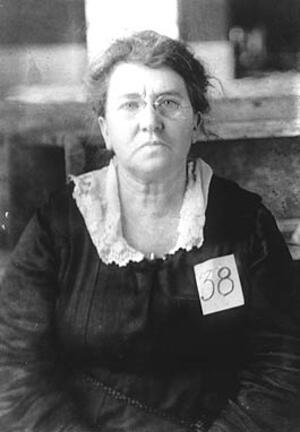
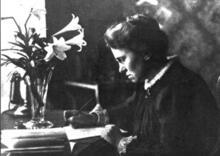
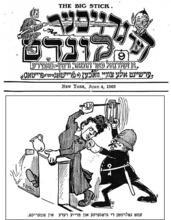
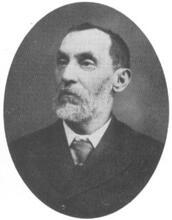
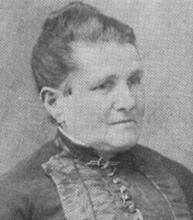
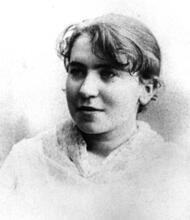

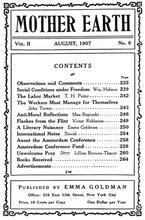
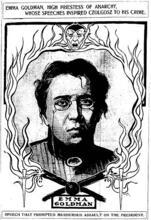

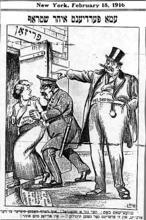
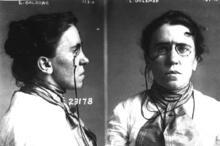
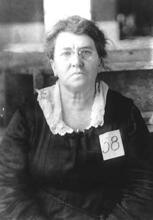
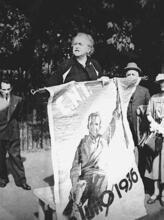
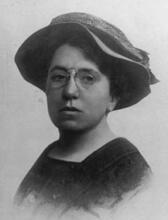
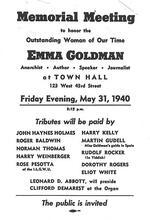


(Despite her criticism of the Zionist movement, however, her growing awareness in the 1930s of the "desperate need of millions of people who are slowly being exterminated" made her increasingly sympathetic to Jewish attempts to establish settlements in Palestine, as long as they respected the rights of local inhabitants.) Anyone who knows emma goldman, would see this as an utter bs, she would never and she never did accept any kind of apertheid and occupation or colonialism, her entire life is based on fighting against this, dont you ever offend her memory by making stuff like this up.
Jewish has always been a multi-dimensional subject, and Ms. Goldman, Trotsky, Disraeli, and other famous people, including Spinoza, Mendelsohn, and Einstein, who were ethnically Jews but not always completely onboard by other definitions illustrate this pretty well. They have to be accepted for their contributions to history and to their people, even if they need to also be critiqued for imperfections in their assumptions and for the complicated way they've impacted their own people.
Her criticisms of the religion of her time were on-target. Her solutions were not so great. I looked in on this page researching her role in egging on the assassination of McKinley. Because of her fiery radicalism she sometimes had a blind "third eye" and "third ear" and so her approach often caused as many problems as it aimed to resolve.
Maybe on paper. Emma Goldman wasn't just "hostile to religion," she was an avowed atheist. She said, "Only after the triumph of the Atheistic philosophy in the minds and hearts of man will freedom and beauty be realized." You say, "...she understood that her own ideals had their roots in a Jewish historical experience shaped by longstanding oppression." Is that the reason she is a "Trailblazing Jewish woman?" Well, her ideals had roots in the oppressive historical experiences of young pregnant women and black people and gay people. Does this mean she was a trailblazing young, pregnant, black, gay woman? There are enough Jewish trailblazers not to have to claim nonjewish activists.
I think that if all women who have thought this way when she was alive we would have gotten things done alot faster for women. Even though now there are still people that thing women should not do a specific job. Like the military for example there are still people that think a women cant do the same job a man can in the military. im sure some who agree with me that sexism and I for one do NOT agree with it.I say "GOOD FOR YOU EMMA GOLDMAN YOU DID ALOT FOR WOMEN JUST BY NOT GIVING UP!"
In reply to <p>I think that if all women by Anonymous
I quite agree with "Anonymous." Emma Goldman was a great thinker, writer, and individual. I have read her essays many times over and, as with all worthwhile literature, there is something new to be learned each time.
An impassioned artist has made an ongoing project to site images of New York heroes around the city. For the 5th of May she chose to go out at dawn and hang small glass-enclosed images of Emma Goldman in appropriate places in the city. This project emerged from an idea called "Wish you were here" which originally was about hanging images of ex-NewYorkers in places they cherished. History took over. A glorious image of Tesla in a small plexiglass frame hanging from brass chain can still be found outside his hotel. Emma Goldman can be tracked at this website:
http://diderotsblog.blogspot.c...